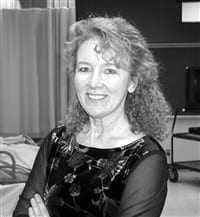A Different Shortage Nursing Enrollment Is Rising — And Colleges Are Scrambling To Keep Up
Three years ago, hospitals and other health care institutions were bemoaning the shortage of students in nursing programs.
Today, with the nationwide nursing crunch still a major problem, nursing school enrollment is no longer as dire an issue — but a shortage of programs and faculty to accommodate those students is.
“The biggest challenge now is the nursing faculty shortage,” said Elizabeth Fiscella, director of Nursing at Holyoke Community College (HCC), who was recently named to the Massachusetts Board of Nursing’s Educational Advisory Board, which is examining that dilemma.
“It’s difficult to find educated staff to teach our nurses, so we’re looking at the qualifications the board has set forth, so we can be more flexible with hiring adjunct faculty, for instance. Here, we just had 220 applications for 53 slots for our RN program, so there is interest. It’s just a matter of being able to increase capacity. Without more nursing staff, it’s impossible, and it’s a constant struggle.”
And it’s a struggle being experienced by colleges throughout the region, but one that is being met with expansions of existing programs, at Holyoke and elsewhere — to the degree that programs can be expanded with the faculty available.
“We have increased faculty to compensate for additional students we’ve admitted,” said Mary Tarbell, chair of Nursing at Springfield Technical Community College (STCC), which has added a late-afternoon program to its existing nursing offerings to keep up with demand.
With nursing in desperate need not only of new blood, but younger blood, industry leaders fret that the gains made in enrollment over the past few years will be somewhat offset by prospective students being turned away for lack of space. And that has forced area colleges to be both aggressive and creative as they adjust to a new set of realities.
Cramming Them In
Some schools are moving to add late-in-the-day programs to their existing programs. STCC has made room for 34 new students with a late-afternoon program, while HCC has launched an evening LPN track, which accommodates 27 students and runs concurrently with the day program. And starting in 2005, the school will admit another 27 RN students on a two-year track; right now, HCC has first- and second-year students running together.
In addition to extra faculty needs, STCC’s Tarbell explained, one of the challenges of adding students is the limited number of clinical placements in the area.
“We have to be willing to bargain for clinical placements,” she told The Healthcare News. “And we need to be willing to try non-traditional placements outside of hospitals. That means long-term-care facilities, community agencies, school systems, and day-care centers.”
The nationwide nursing crunch has resulted from a number of factors, but two colliding trends have been especially significant. With the average age of the American nurse in the mid-40s, retirements have been outpacing nursing school enrollments for some time.
In 1996, nursing schools began reporting serious drops in students, a situation that lasted for five years. But as media attention to the nursing shortage picked up, the trend was reversed in the fall of 2001, and enrollments nationwide have picked up dramatically since then.
And it’s not just young people choosing nursing as a career — older people have been enrolling in large numbers as well, drawn by attractive salaries and signing bonuses, and perhaps, in a sluggish economy, struggling to find work in their current occupation.
“We’re seeing many second-degree people, and in some cases third-degree people,” Tarbell said. “Some people who have completed master’s degrees or bachelor’s degrees are coming back for their associate’s degrees in Nursing. It’s a combination of issues: the attractive salaries, the void that exists in nursing, and possibly not being able to find a position in their own field.”
Fiscella said HCC gets a wide array of older students, including those displaced from dot.com positions and people with master’s degrees in other fields.
“The competition is really up, and the kids that used to come into nursing from high school aren’t there because of that competition,” she said. “It’s a challenge — we want to increase the pool of younger candidates because, overall, nurses’ ages average in their mid- to late 40s. We want to get the 18- and 20-somethings into it, but that’s difficult with the way the competition is.”
Gaining Momentum
Still, even with the challenges faced by colleges in keeping up with demand, the increase in interest is widely seen as a positive step in a long-term effort to bring more nurses into the pipeline nationwide.
According to the American Association of Colleges of Nursing (AACN), enrollments in entry-level baccalaureate programs in nursing increased by 15.9{06cf2b9696b159f874511d23dbc893eb1ac83014175ed30550cfff22781411e5} last fall, continuing a three-year upward trend.
“With renewed calls on the national level for a more highly educated nursing workforce, it is very encouraging to see a growing interest in baccalaureate-degree nursing as a career goal,” AACN President Kathleen Ann Long said. “The dramatic growth in enrollments this year is a testament to the innovative work of schools nationwide to expand student capacity in nursing programs despite limited resources.”
Still, analysts say, the increased enrollment is not sufficient to address a nursing shortage that is expected to intensity over the next 10 years as older nurses retire and Baby Boomers approach their retirement years — typically a time of increased medical needs.
But there are other positive signs. A study released last year by Johnson & Johnson, chronicling the turnaround in interest in nursing programs, reported that 55{06cf2b9696b159f874511d23dbc893eb1ac83014175ed30550cfff22781411e5} of teens aged 16 to 18 have personally considered a career in nursing or know someone who has, and another 67{06cf2b9696b159f874511d23dbc893eb1ac83014175ed30550cfff22781411e5} of teens would view very positively the news that a family member or friend was considering a career in nursing.
Meanwhile, the latest Post-Secondary Planning Survey published by the National Research Center for College and University Admissions found that high school sophomores and juniors rank nursing fourth among their career choices, behind careers in medicine, law, and music.
“The nursing profession was off the radar screen of young adults and second-career seekers,” noted James T. Lenehan, president and vice chairman of the board of Johnson & Johnson. “Now I am pleased to note we are making progress in addressing one of the most serious problems affecting the health care sector.”
And it’s not only new nurses earning degrees. The wide-open opportunities in the industry have caused many current RNs and LPNs to return to school for bachelor’s degrees in Nursing — in programs such as an RN-to-BS track offered by Elms College — which allows them greater flexibility in climbing career ladders.
Tarbell said that, for those contemplating nursing for the first time, while there are plenty of incentives to get into the field, a normal, 9-to-5 work schedule is often not one of them. But for those who enjoy the lifestyle, available positions abound — if they can get the education they need.
“The increased enrollment is a very positive thing,” Tarbell said — and area schools are busy making sure the surge in interest doesn’t go to waste.




Comments are closed.